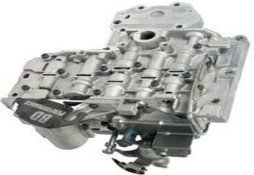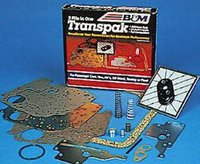
Transmission shifting can often be the most important thing to a driver. Imagine how long it would take to get somewhere if the automobile doesn’t shift out of 1st gear. The shift quality can also be a sign of a transmission developing problems. Things like jolting hard shifts or flair up between gears means a trip to the shop.
For an auto mechanic this is one of the first detectable signs there’s an internal, external or electrical malfunction beginning to develop. All automatic transmissions are designed to change gears at the correct time determined by reading various input signals.
Some of the more important inputs that are monitored that will directly affect transmission shifting would be the throttle position, engine load, the vehicle’s overall speed and the RPMs of the engine.
It is the job of the transmission to provide a positive change of gear ratios without jarring the driver and passengers.
Some race fans install high performance shift kits to override the factory programing. If a band or clutch is applied to quickly it will cause a harsh shifting condition.
If the clutches are applied to slowly engine flare up and increased wear of the clutch packs and bands may occur. This is why transmission shifting is so important for not only driver satisfaction but the longevity of the unit.
How Transmission Shift Controls
On most models shift feel is controlled by the pressure at which each hydraulic member is applied or released. As an example, in an effort to reduce harshness during gear changes a band is often released while a multiple disc pack is being applied.
The timing of these two actions must be just right or both components will be released or applied at the same time. This would cause engine flare-up or clutch slippage. In order to smooth out gear changes a few other methods and design features are implemented. Again as an example many modern transmissions will contain a wavy spring steel separator plate in their clutch pack and friction discs assembly.
This wavy spring steel separator plate will help smooth out the application of that clutch pack. On the electronic side of the equation shifting can be smoothed out by using the installed electronics in the valve body. One of the most common techniques is to actually pulse the shift solenoids that supply hydraulic flow to the band apply pistons and clutch pack assemblies. When these electronics fail they will often set trouble codes and turn on the check engine light.
Transmission Shift Timing

This pulsing of the solenoids prevents the immediate and overly harsh engagement of the gear by allowing for a very small amount of slippage.
The shift timing is determined by throttle pressure and on old transmissions by governed pressure acting on opposite ends of the shift valve. When a vehicle is accelerating from a stop throttle pressure is high and governor pressure is low.
As vehicle speed increases the throttle pressure decreases and the governor’s pressure increases. When this pressure overcomes the throttle pressure the spring tension at the shift valve moves the valve to direct pressure so that it will up shift at the right time.
When you install high performance shift kits they often come with a heavy duty shift valve or a replacement spring to delay the natural up-shifting. Again on modern automobiles this operation is simplified. They use the ability of the transmission control module to not only read critical inputs, but control outputs.
An example of this is when sport mode is selected, the shift solenoids are operated at a higher RPM. When it comes to the average driver in most cases they would prefer a firm shift, but not too firm. From a fuel economy and comfort perspective an early shift is often desired by these very same drivers.
If you ask fans of high performance driving often they would rather feel a more positive transmission shift at a higher rpm. In this case you may want to take a look at my page that discusses valve bodies and high performance shift kits. Give this car repair information page a bookmark or share it with friends.
There is not a whole lot of information available on the Internet about this subject. This is why I have built a repair module that discusses the theory of operation and specific problems with automatic transmissions.
Do you require one on one help with your particular car problem. This next link takes you to a page that offers some auto repair help.
The homepage is up next and provides a very good explanation about what types of information and auto repair help is available on the you fix cars website. Stop by and visit the Homepage for YouFixCars.com.

